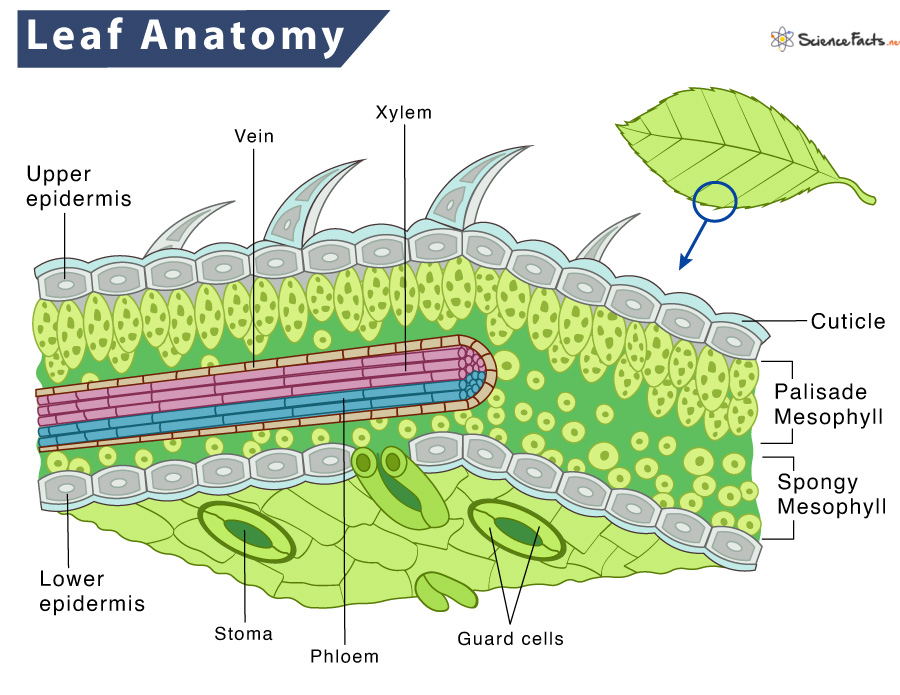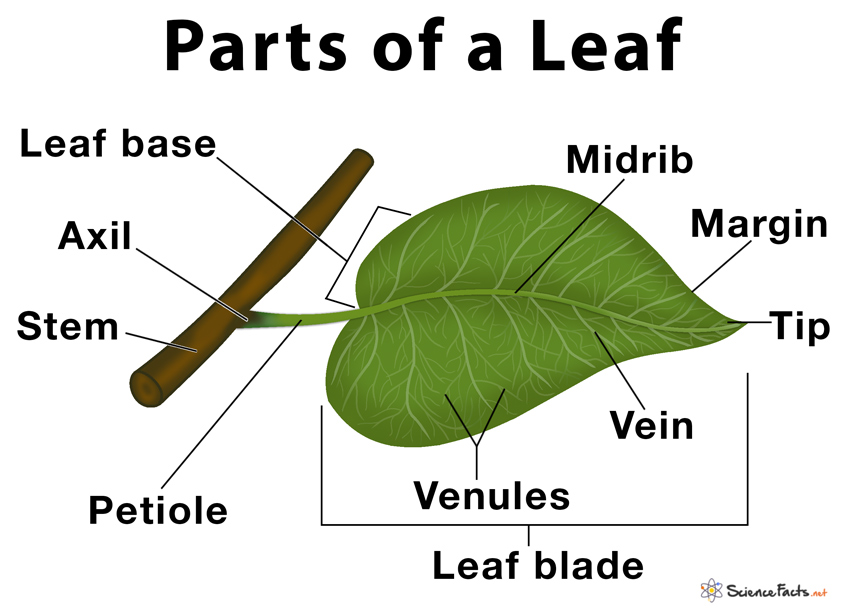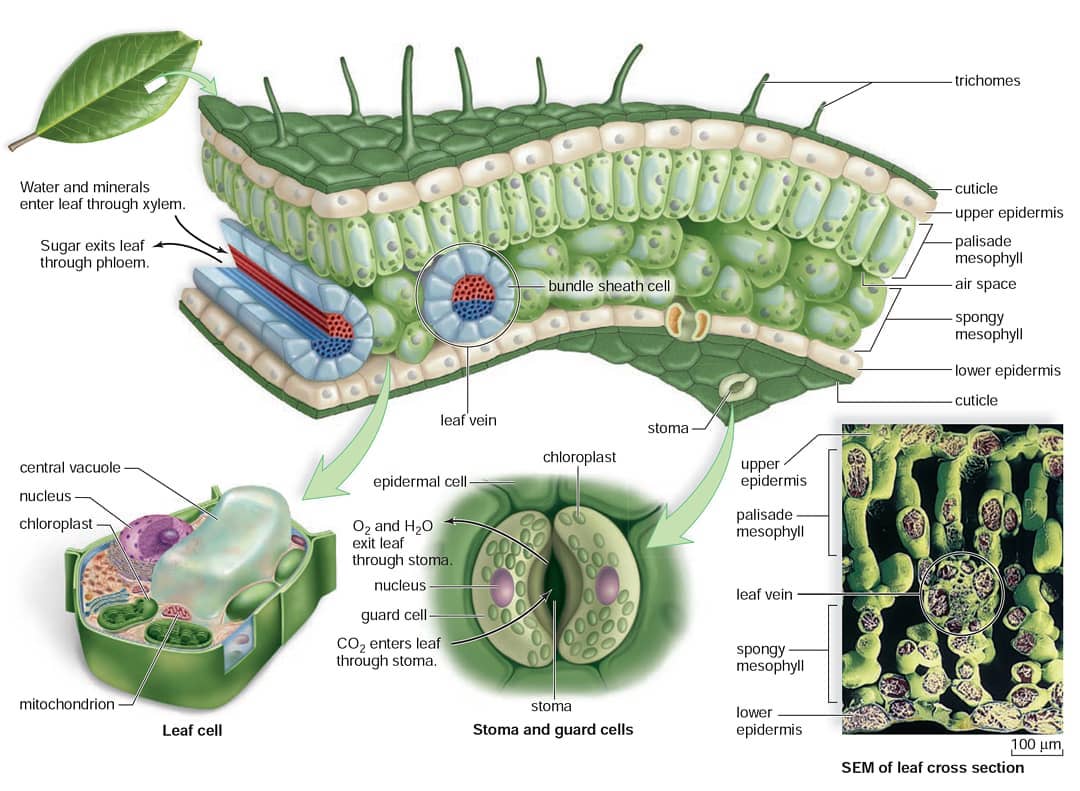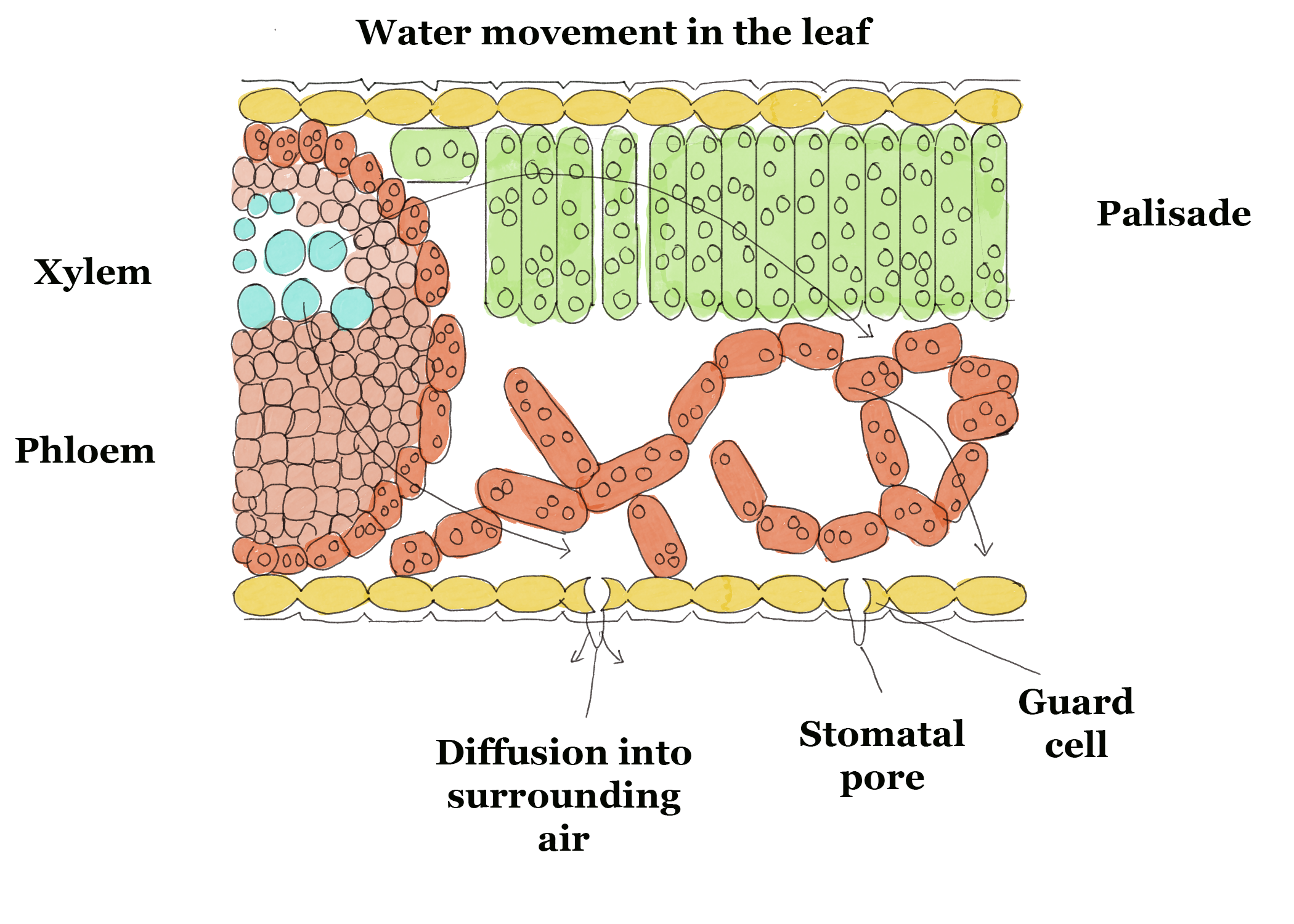/parts_of_a_leaf-56abaed23df78cf772b5625a.jpg)
Plant Leaves and Leaf Anatomy
Definition of a Leaf: The leaf is a flattened, lateral outgrowth of the stem in the branch, developing from a node and having a bud in its axil. It is normally green in colour and manufactures food for the whole plant. The leaves take up water and carbon dioxide and convert them into carbohydrates in the presence of sunlight and chlorophyll.

Leaf Structure photo Botany, Teaching biology, Biology
Based on anatomy, leaves are of two types: a. Dorsiventral: Dorsiventral leaves are found in the dicotyledonous plants. Such leaves generally remain horizontal, and sunlight falls on their upper surface. The upper surface of a leaf is called the ventral surface or adaxial surface, and the lower surface is called the dorsal or abaxial surface.

What Is The Structure And Function Of Leaves
The petiole is a stem that attaches the leaf blade to the main stem of the plant. As plants have radiated, diversified, and adapted to different environments, you'll see that there are many variations on this theme. The photo on the left is a palmate leaf, the diagram on the right is a pinnate leaf. Photo by Maria Morrow, CC-BY 4.0. Diagram on.

Labeled Diagram Of A Leaf
A leaf diagram representing the parts of a leaf. Read more: Types of Stipules. Venation. Venation is defined as the arrangement of veins and the veinlets in the leaves. Different plants show different types of venation. Generally, there are two types of venation:
:max_bytes(150000):strip_icc()/leaf_crossection-57bf24a83df78cc16e1f29fd.jpg)
Plant Leaves and Leaf Anatomy
1 General characteristics 2 Morphology Toggle Morphology subsection 2.1 Basic leaf types 2.2 Arrangement on the stem 2.3 Divisions of the blade 2.4 Characteristics of the petiole 2.5 Veins 2.6 Morphology changes within a single plant 3 Anatomy Toggle Anatomy subsection 3.1 Medium-scale features 3.2 Small-scale features 3.3 Major leaf tissues

Leaf Labelled Stock Photo Download Image Now iStock
In this article we will discuss about the structure of a leaf with the help of a diagram. A leaf is a compromise between two conflicting evolutionary pressures.

Leaf Structure and Photosynthesis YouTube
GCSE WJEC Structure of plants - WJEC Leaf structure Plants adapt in order to efficiently collect raw materials required for photosynthesis. These raw materials must be transported through the.

Parts of a Leaf, Their Structure and Functions With Diagram
The structure of the umbrella tree leaf is typical of leaves in general (Above left photo). It has an outer layer, the epidermis, which produces a waxy waterproof coating. The epidermis of the undersurface produces guard cells, which swell and shrink to close and open the pores (stomata) which control the loss of water vapor (transpiration) and.

Labeled Diagram Of A Leaf hubpages
Anatomy of Leaf (With Diagram) | Plant Anatomy | Botany Article shared by : The leaf both morphologically and anatomically is the most variable plant organ. They have been grouped as —foliage leaves, cataphylls, hypsophylls and cotyledons. Of these the foliage leaves are the principal photosynthetic organs.
.PNG)
Plant structure adaptations and responses Presentation Plants
Certain organs that are superficially very different from the usual green leaf are formed in the same manner and are actually modified leaves; among these are the sharp spines of cacti, the needles of pines and other conifers, and the scales of an asparagus stalk or a lily bulb. Leaf function photosynthesis

Plant Structure and Function Plant structure, Biology plants, Plants
Figure 30.8.1 30.8. 1: Parts of a leaf: A leaf may seem simple in appearance, but it is a highly-efficient structure. Petioles, stipules, veins, and a midrib are all essential structures of a leaf. Within each leaf, the vascular tissue forms veins. The arrangement of veins in a leaf is called the venation pattern.

Structure of a leaf
Leaf parts and directional terms. Left: Diagram of a simple leaf showing the basic parts, including the petiole (stalk), lamina (blade), veins (strands of vascular tissue), margin (edge of the lamina), apex of the lamina, and base of the lamina.Right: Diagram of a leaf attached to a stem showing terms for directionality: adaxial (upper leaf surface), abaxial (lower leaf surface), proximal.

Parts of Leaf Structure, Types How Leaves Work , Function and Diagram
Find these structures on the attached diagram of cellular leaf tissues. Epidermis - The leaf's outer layer and protective "skin" surrounding leaf tissues. Cuticle - A waxy protective.

Leaf Structure, Types, Functions GCSE Biology Revision
Figure 30.10.1 30.10. 1: Mesophyll: (a) (top) The central mesophyll is sandwiched between an upper and lower epidermis. The mesophyll has two layers: an upper palisade layer and a lower spongy layer. Stomata on the leaf underside allow gas exchange. A waxy cuticle covers all aerial surfaces of land plants to minimize water loss.

Label the following diagram of a leaf. Brainly.in
The midrib extends from the petiole to the leaf tip and contains the main vein. Additional veins branch from the midvein. The margin is the edge of the leaf. Figure 3.4.1.2 3.4.1. 2: The petiolate leaves of the geranium consist of a petiole and blade (lamina). The wide lamina is attached to the stalk-like petiole.

Diagram of a leaf showing typical features of a dicot Flickr
Figure 9.3. 2: Cross section of a hydrophytic leaf. Observe a prepared slide of a hydrophyte, such as Nymphaea, commonly called a water lily. Note the thin epidermal layer and the absence of stomata in the lower epidermis. In the spongy mesophyll, there are large pockets where air can be trapped.